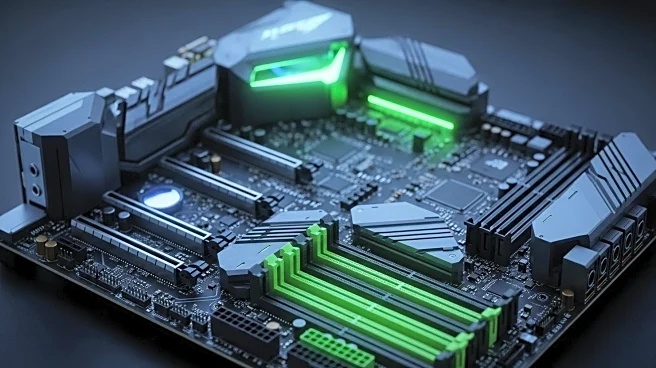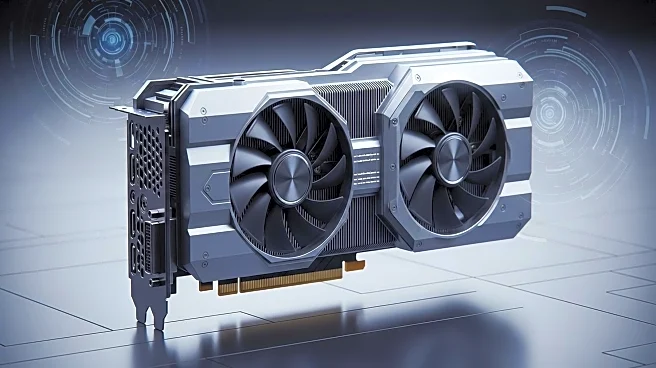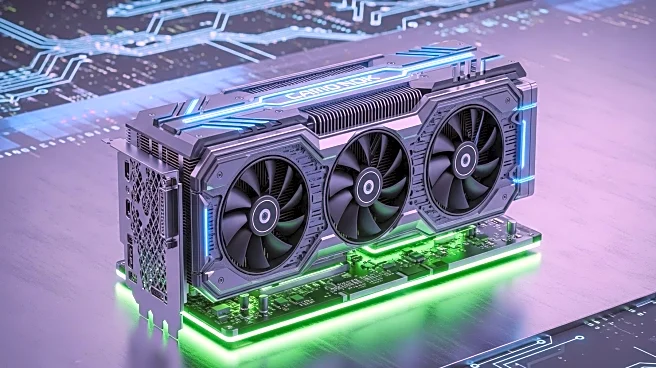What is the story about?
What's Happening?
NVIDIA has officially launched its RTX 5090 graphics card, designed for high-end 4K ray-traced gaming. The card features 32 GB GDDR7 memory and a 575 W Total Graphics Power. Meanwhile, Bolt Graphics has introduced its Zeus GPU, claiming superior performance in path tracing and significantly lower power consumption compared to the RTX 5090. The Zeus GPU utilizes a modular chiplet design, offering expandable memory options and enhanced efficiency. This development marks a new phase in the GPU market, with Bolt Graphics challenging NVIDIA's dominance.
Why It's Important?
The introduction of Bolt Graphics' Zeus GPU represents a potential shift in the competitive landscape of the GPU industry. If Bolt's claims hold true, the Zeus GPU could offer a more efficient alternative to NVIDIA's offerings, appealing to users in specialized fields like 3D rendering and AI workloads. This competition could drive innovation and lead to more diverse options for consumers, potentially lowering prices and improving technology. The focus on path tracing and energy efficiency highlights the industry's move towards more sustainable and high-fidelity graphics solutions.
What's Next?
Bolt Graphics plans to release developer kits later in 2025, with mass production of PCIe cards and servers expected by late 2026. The success of Zeus GPUs will depend on real-world performance and driver support, which Bolt is working to establish. As the market responds to these new offerings, NVIDIA may need to innovate further to maintain its position. The outcome of this competition could influence future GPU designs and the direction of gaming technology.
AI Generated Content
Do you find this article useful?














